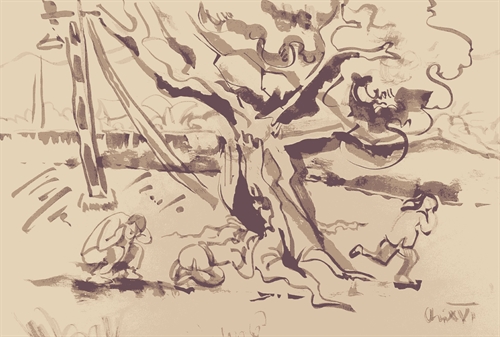 Society
Society

It is important to know how to protect oneself during thunderstorms, especially in vulnerable areas.
 |
It is important to know how to protect oneself during thunderstorms, especially in vulnerable areas.
Are there ways to detect thunderstorms and take preventive measures against lightning strikes?
If you are in an unsafe (lightning-prone) place, you should be on heightened alert if it gets windy, the skies darken and the air gets cooler. Pay attention to the interval between the flash of lightning and the sound of thunder. Very short intervals indicate greater danger and the need to move to safer locations.
If you feel your hairs stand on end, it shows lightning can strike at any time. Sit down immediately, bend your body and cover your ears with your hands. Don’t lie down or put your hands on the ground.
Prevention measures will vary depending on certain conditions.
If you are on the road or in an open space, don’t take shelter under tall trees, because lightning often strikes tall objects and can endanger people standing in the area.
Avoid being close to metal fences or other areas with a lot of metal.
Lightning occurs more often in a humid environment than a dry one. So, if you are caught in a thunderstorm, you must try to reach some dry ground without tall trees or metal objects, and sit down as low as possible. You should not lie down flat on the ground. If you have to move, try to minimise contact between your body and the ground, for instance, by tiptoeing.
If you are indoors, stay away from windows and doors, humid areas, water containers and electrical appliances.
Being inside a car with a metal roof is safe, but avoid leaning or touching any part of the metal frame.
You shouldn’t stand or sit at bus stops during heavy thunderstorms as these are often metal structures vulnerable to lightning strikes.
Treatment for victims
Call emergency services to treat lightning strike victims. Those who are unconscious and show signs of cardiac and/or respiratory arrest should receive cardiopulmonary resuscitation as soon as possible.
If the victims’ bones are broken, they should be immobilized before being moved to a safer place.
Removing burned clothes, watches and jewelry can help prevent inflammation of wounds caused by lightning.
If victims suffer from nausea, they should not be given anything to eat or drink. Just rush them to the nearest medical facility.
The chances of survival can reach 90 per cent if victims receive emergency treatment within seven minutes of being struck by lightning. — VNS
Doctor Nguyễn Trâm Anh, Sức khỏe và đời sống (Health and Life) newspaper




